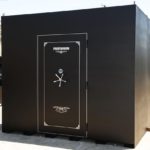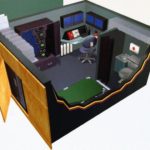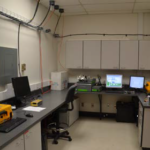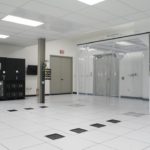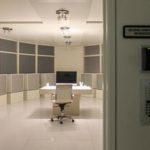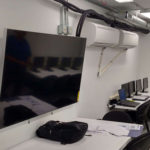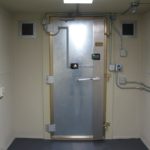TNH has some of the most advanced vault-like hiding places.
–
Table of Contents:
- Introduction
- Locations & Numbers
- Hardened
- Duration
- Self-extraction
- Unconventional Warfare
- Ancient History
- Concepts
- History
–
Introduction:
A ‘safe room’ is just what it sounds like; a room where you will be exceptionally safe, regardless of what is going on outside. On Earth and other worlds, safe-rooms are usually armored hidden rooms secretly built cleverly into spaces between walls and other rooms in large houses. Safe rooms often include their own phone landline which cannot be cut by the visible outside telephone pole wires, as well as a bed, refrigerator, toilet, and television monitors connected to hidden cameras and microphones throughout the surrounding property. The purpose of safe-rooms is to provide residents with an emergency hiding place until authorities or other assistance can arrive to address threats which those residents are not capable of handling on their own.
On TNH, safe-rooms are a little more advanced; they include all of the features of a normal safe-room, but are more like a laboratory built into a bank vault, and are shielded against some of the most powerful cosmic radiation. They can function as non-ejectable life-pods and stasis chambers. While most of the crew and passengers will be directed to the armories and escape pods, the commanding officers and their entourages may find it makes more sense in certain scenarios to move themselves to one of these safe-rooms.
They also have their own air and water recycling systems; their atmospheres are kept isolated from that of the rest of the ship, ensuring no smoke, gas, or airborne contaminants/contagions get in.
–
Locations & Numbers:
TNH’s safe-rooms are located close to berthings and other quarters, as well as a few other spots; they are strategically placed so that crew members will be able to get to them quickly… from the areas of the ship in which they are most likely to be living or working. Their exact locations are classified, revealed only to those who are approved to use them (and that’s usually high-ranking active-duty personnel, visiting dignitaries, etc.). There are enough safe-rooms on this carrier for a few hundred people; not one safe-room per person, but plenty to allow a dozen or so at a time into each one.
(Estimate: ~300 human-sized people, divided by ~10 max. per safe-room, = ~30 safe-rooms spread out evenly throughout the carrier, likely in a widely-spaced grid of 2×5 (10 safe-rooms) every 15 levels/stories –but with some of those safe-rooms up a level or down a level, always offsetting them enough keep one within a few levels/staircases of anyone on any floor of the ship.)
–
Hardened:
These rooms are built to last even if everything outside is on fire, radiated, or melting away due to contact with molecular acid. A hull breach resulting in complete loss of the atmosphere in the surrounding rooms and hallways will not compromise the strength of one of these rooms. Even a nuclear detonation outside the ship (assuming TNH’s shields did not withstand it) would barely be noticed as a faint rumble for those inside one of these rooms. (This is true even if TNH’s reactor went super-critical, blowing off the back half of the carrier.)
–
Duration:
Anyone in a safe-room has all the features (minus ejection/navigation) of a lifeboat (ejection pod). Those include stasis/hibernation chambers/pods, in which they can rest and stay healthily in their primes for an incredibly long time (generations). You likely won’t be able to siege anyone out of one of these rooms.
–
Self-extraction:
Should anything ever go wrong in a safe-room, or should the situation outside warrant leaving one’s safe-room, each safe-room in TNH comes with a variety of tools that will allow those inside to get back out –even if the vault-like doors become jammed/unresponsive. The kit includes special cutting-torches, a device similar to a light-saber, and even one of the subatomic-transmutation tools used to repair extreme damage to the ship’s hull or other parts. Also, of course, Inisfreeans can teleport in to teleport the people inside back out.
–
Unconventional Warfare:
Normally a safe-room is for keeping people safe in it, but it has other uses for those with a clever mind. One unsettling possible use is to store a nuclear device, ensuring it detonates when its timer counts down; sometimes it may make more sense to disable/destroy the whole ship that way, should ever it be fully overrun/invaded. Remember: safe-rooms are for keeping things safe in them, not keeping things outside them safe.
–
Ancient History:
Though humans about TNH don’t know it, the greatest safe-rooms of all time are the planets themselves, and every planet they have colonized in 34 Tauri… actually is the outer shell of a giant safe-room… containing secret doorways out… both through the cave networks those planets were engineered and built with… and through the core (central star) of the world (and the mini-star inside the core of those worlds, and inside every world, connects to all the rest). There is also a Universe-wide/spanning safe-room; since all stars are connected internally, whoever can survive entry into a star (assuming they have the right mindset/intent/focus)… will be in the only safe-room that exists outside of Space-time; they’ll be in another (and private) dimension. So… technically that makes it a safe-room hidden within a network of other safe-rooms (the safe-room that is accessible via any star… which is enclosed by the planets which are safe-room shells around some of those stars).
–
Concepts:
–
History:
By 2530, Auz had ‘christened’ all of TNH’s safe-rooms with the interested female personnel. No one else had anytime-access to them like he did; everyone else had to have a legitimate emergency to even open the door of one. This made these hangouts especially appealing and prized.
–
